Wondering which oil will make your dish both delicious and nutritious? The right cooking oil can transform your culinary creations, blending vibrant flavors, essential nutrients, and versatility for any method – frying, roasting, or drizzling. We’ve ranked the top 20 healthiest cooking oils, each tailored to specific culinary styles and health goals, ensuring every choice delivers maximum benefit and taste for home cooks. Whether you’re crafting a crispy stir-fry or a delicate salad, these oils are your pantry essentials.

1. Extra Virgin Olive Oil (EVOO)
Extracted from fresh olives, extra virgin olive oil is a Mediterranean cornerstone renowned for its heart-healthy monounsaturated fats (MUFAs) and antioxidants like polyphenols and vitamin E. These compounds reduce inflammation, lower bad cholesterol, and support cardiovascular wellness, making EVOO a staple for health-conscious kitchens. Its peppery, fruity flavor adds depth to a wide range of dishes, from simple salads to roasted vegetables, offering a taste of the Mediterranean in every bite.
Cold-pressed EVOO retains maximum nutrients, ensuring vibrant flavor and health benefits. It’s ideal for medium-heat cooking like sautéing or roasting, but it truly shines in raw applications such as dressings or drizzling. Versatile enough for both savory dishes and desserts like olive oil cake, this oil is a must-have for elevating everyday meals with nutrition and flair.
Best Uses
- Sautéing garlic for pasta aglio e olio.
- Roasting zucchini and bell peppers.
- Drizzling over hummus or caprese salad.
- Baking olive oil cakes.
Why It Stands Out
- Heart-protective MUFAs and antioxidants.
- Cold-pressed retains bold flavor, nutrients.
- Elevates savory and sweet dishes.
- Perfect for Mediterranean recipes.
Ideal For
- Heart-health-focused cooks.
- Mediterranean diet fans.
- Flavor-driven home chefs.
- Everyday salad makers.
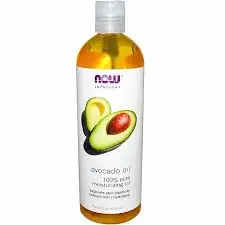
2. Avocado Oil
Pressed from ripe avocado flesh, avocado oil is a nutritional powerhouse packed with MUFAs and lutein, an antioxidant that promotes eye and heart health. Its buttery, slightly nutty flavor enhances a variety of dishes, from grilled meats to fresh salads, while supporting cholesterol balance and metabolic wellness. It’s one of the most heat-stable healthy oils, making it a top choice for wellness-focused cooks.
Cold-pressed versions preserve its rich nutrient profile, ideal for raw uses like dressings, while refined options excel in high-heat methods like frying or roasting. This versatility allows avocado oil to seamlessly transition from crispy fried foods to creamy homemade mayonnaise, offering both health benefits and culinary flexibility. Its subtle flavor complements both sweet and savory recipes, ensuring consistent results.
Best Uses
- Frying crispy chicken or sweet potato fries.
- Roasting asparagus for golden crispness.
- Blending into creamy salad dressings.
- Making homemade avocado mayo.
Why It Stands Out
- High smoke point for safe frying.
- MUFAs support cholesterol balance.
- Nutty flavor suits sweet, savory.
- Nutrient-dense for health buffs.
Ideal For
- High-heat cooking lovers.
- Health-conscious fryers.
- Versatile recipe creators.
- Salad dressing enthusiasts.

3. Canola/Rapeseed Oil
Derived from rapeseed plants, canola oil is a budget-friendly gem low in saturated fat and high in omega-3s (ALA), offering a balanced omega-6:omega-3 ratio that promotes heart health. Its neutral flavor makes it a versatile workhorse, seamlessly blending into recipes without overpowering other ingredients. It’s suitable for a wide range of cooking methods, from baking to high-heat frying, making it a staple for everyday meals.
Minimally processed, non-GMO versions ensure maximum nutrient retention, delivering reliable performance without additives. Canola oil’s affordability and adaptability make it ideal for families and cooks who need a cost-effective oil that doesn’t compromise on health. Whether you’re whipping up fluffy muffins or stir-frying vibrant vegetables, this oil delivers consistent results with ease.
Best Uses
- Baking moist muffins or banana bread.
- Frying tempura or onion rings.
- Stir-frying colorful mixed vegetables.
- Making homemade granola.
Why It Stands Out
- Heart-healthy omega-3s, MUFAs.
- Neutral taste fits any dish.
- Affordable for frequent use.
- Stable for high-heat cooking.
Ideal For
- Budget-conscious cooks.
- Everyday bakers, fryers.
- Family meal planners.
- Neutral flavor seekers.
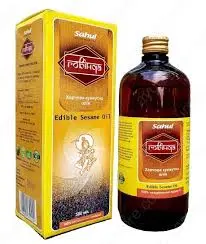
4. Sesame Oil
Made from sesame seeds, sesame oil is a flavorful powerhouse packed with antioxidants like sesamol and sesaminol, which support heart health and blood sugar regulation. Toasted sesame oil delivers a bold, nutty depth perfect for finishing dishes, while untoasted versions offer a neutral profile for cooking.
This oil’s versatility makes it a favorite for both bold and subtle flavors, enhancing everything from noodle dishes to grilled proteins. Its rich antioxidant content adds a health boost, while its distinctive taste transforms simple ingredients into vibrant meals. Sesame oil is a go-to for cooks looking to elevate their dishes with a touch of umami and wellness.
Best Uses
- Stir-frying beef and broccoli.
- Drizzling over ramen or noodle salads.
- Marinating sesame-crusted skewers.
- Enhancing dipping sauces.
Why It Stands Out
- Antioxidants boost heart health.
- Toasted adds bold umami.
- Versatile for cooking, finishing.
- Enhances Asian-inspired dishes.
Ideal For
- Asian cuisine lovers.
- Bold flavor enthusiasts.
- Stir-fry aficionados.
- Marinade creators.

5. Safflower Oil
Extracted from safflower seeds, high-oleic safflower oil is a heart-healthy choice rich in MUFAs, which may reduce cardiovascular risk. Its neutral flavor makes it a top pick for high-heat cooking, ensuring stability during intense frying or searing. Less prone to oxidation than other PUFA-rich oils, it delivers crispy, golden results without compromising nutrition.
This oil’s flavorless profile makes it ideal for recipes where ingredients take center stage, from baked goods to seared meats. Its high smoke point and heart-healthy fats make it a reliable choice for cooks who prioritize both performance and wellness, offering versatility for everything from deep-fried treats to delicate pastries.
Best Uses
- Deep-frying chicken wings or donuts.
- Baking neutral cakes or pastries.
- Searing steaks for a perfect crust.
- Frying crispy appetizers.
Why It Stands Out
- High smoke point for frying.
- MUFAs promote heart wellness.
- Neutral flavor suits all recipes.
- Stable for intense heat.
Ideal For
- High-heat fryers.
- Neutral oil bakers.
- Heart-conscious cooks.
- Crispy dish makers.

6. Peanut Oil
Pressed from peanuts, peanut oil offers heart-healthy MUFAs and vitamin E, delivering a mild nutty flavor that enhances a variety of dishes. It excels in high-heat cooking, particularly for Asian-inspired recipes like stir-fries and deep-fried dishes. Refined versions have reduced allergen content, making them safer for many kitchens.
Its subtle flavor and heat stability make it a versatile choice for achieving crispy textures and rich tastes, from tempura to roasted sauces. Peanut oil’s ability to balance health benefits with culinary performance makes it a favorite for cooks who want reliable results with a hint of nuttiness in every bite.
Best Uses
- Stir-frying shrimp for pad thai.
- Deep-frying spring rolls or tempura.
- Roasting peanuts for sauces.
- Frying crispy dumplings.
Why It Stands Out
- Stable for high-heat cooking.
- MUFAs support heart health.
- Nutty flavor adds depth.
- Allergen-free refined options.
Ideal For
- Asian cuisine fans.
- High-heat fryers.
- Nutty flavor lovers.
- Safe cooking seekers.

7. Sunflower Oil (High-Oleic)
Extracted from sunflower seeds, high-oleic sunflower oil is loaded with MUFAs and vitamin E, promoting heart health and reducing inflammation. Its neutral flavor makes it a go-to for frying, baking, or sautéing, blending seamlessly into any dish. Its stability ensures safe, repeated high-heat use for consistent results.
This oil’s flavorless profile is perfect for recipes where other ingredients shine, from flaky biscuits to crispy fried foods. Its heart-healthy fats and high smoke point make it a practical choice for frequent cooks who value both nutrition and performance in their everyday meals.
Best Uses
- Frying potato chips or fish.
- Baking flaky biscuits or scones.
- Sautéing neutral vegetables.
- Making crispy snacks.
Why It Stands Out
- MUFAs boost cardiovascular health.
- Neutral flavor fits all cuisines.
- Stable for high-heat tasks.
- Vitamin E adds antioxidants.
Ideal For
- Heart-health fryers.
- Neutral oil users.
- Everyday bakers.
- Consistent cooks.
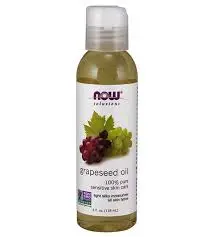
8. Grapeseed Oil
Made from grape seeds, grapeseed oil delivers PUFAs and vitamin E for skin and heart health, with a light, clean flavor that enhances without overpowering. Iits omega-6 content suggests moderation to avoid inflammation. Ideal for sautéing or dressings, it’s a versatile choice for delicate dishes.
This oil’s subtle taste makes it perfect for recipes where ingredients take center stage, from creamy risottos to fresh salads. Its antioxidant content and adaptability make it a favorite for cooks who want a health-conscious oil that performs well in both cooked and raw applications.
Best Uses
- Sautéing mushrooms for risotto.
- Making fresh salad vinaigrettes.
- Baking subtle quick breads.
- Enhancing light sauces.
Why It Stands Out
- Light flavor enhances dishes.
- Vitamin E boosts antioxidants.
- Versatile for cooking, raw uses.
- Clean taste for delicate recipes.
Ideal For
- Salad dressing makers.
- Medium-heat cooks.
- Vitamin E dieters.
- Subtle flavor fans.

9. Walnut Oil
Pressed from walnuts, walnut oil is rich in omega-3s (ALA), offering anti-inflammatory benefits for brain and heart health. This oil adds a gourmet touch, transforming salads and pastas with elegance and depth.
Perfect for drizzling or tossing, walnut oil elevates simple ingredients into sophisticated dishes, from roasted vegetables to fresh pestos. Its omega-3 content and rich flavor make it a top choice for health-focused cooks who want to add a luxurious finish to their meals without high heat.
Best Uses
- Drizzling over beet salads.
- Tossing with herb pasta.
- Blending walnut pesto.
- Enhancing roasted veggies.
Why It Stands Out
- Omega-3s support wellness.
- Nutty flavor elevates dishes.
- Best for cold applications.
- Gourmet finish for salads.
Ideal For
- Gourmet salad creators.
- Omega-3 enthusiasts.
- Low-heat cooks.
- Nutty flavor lovers.
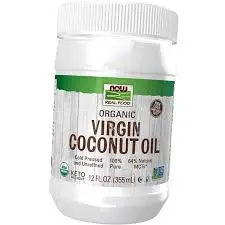
10. Coconut Oil (Virgin)
Extracted from fresh coconut meat, virgin coconut oil contains medium-chain triglycerides (MCTs) that may provide quick energy, though its saturated fat content suggests moderate use to balance cholesterol effects. Its sweet, tropical flavor adds flair to baked goods or curries.
This oil’s unique taste enhances tropical and sweet recipes, from coconut cookies to spicy stir-fries. Organic, unrefined versions ensure purity, making coconut oil a favorite for cooks who want to infuse their dishes with a distinctive flavor while balancing health considerations.
Best Uses
- Baking coconut macaroons.
- Sautéing curry vegetables.
- Popping tropical popcorn.
- Making tropical smoothies.
Why It Stands Out
- MCTs provide energy boost.
- Tropical flavor enhances dishes.
- Organic options ensure purity.
- Unique for specific recipes.
Ideal For
- Tropical cuisine fans.
- Occasional bakers.
- MCT dieters.
- Flavor explorers.

11. Ghee (Clarified Butter)
Made by simmering butter to remove water and milk solids, ghee is a lactose-free clarified butter with a rich, nutty flavor, ideal for high-heat cooking. Packed with butyrate, an anti-inflammatory compound, it supports gut health and produces fewer harmful compounds when heated, perfect for frying or roasting.
Ghee’s deep flavor enhances both savory and sweet dishes, from crispy naan to roasted vegetables, offering a warm, buttery taste without lactose concerns. Its stability and health benefits make it a top choice for cooks seeking a versatile, nutrient-rich oil with a traditional touch.
Best Uses
- Frying naan or samosas.
- Roasting root vegetables.
- Searing lamb chops.
- Baking buttery pastries.
Why It Stands Out
- High smoke point for frying.
- Lactose-free for sensitive diets.
- Butyrate aids digestion.
- Rich flavor enhances dishes.
Ideal For
- Indian cuisine lovers.
- Lactose-intolerant cooks.
- High-heat fryers.
- Flavor-rich chefs.
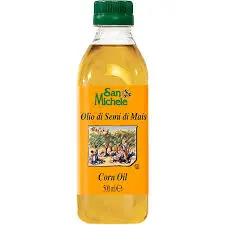
12. Corn Oil
Extracted from corn kernels, corn oil is a budget-friendly choice high in PUFAs and vitamin E. Its neutral flavor suits a variety of dishes, though its omega-6 content suggests moderation to prevent inflammation. This oil is a practical option for achieving crispy textures on a budget.
Corn oil’s versatility makes it ideal for everything from fried tacos to baked cornbread, delivering consistent results without overpowering flavors. Its affordability and high smoke point make it a go-to for cooks who need a cost-effective oil for frequent high-heat cooking tasks.
Best Uses
- Frying tortillas for tacos.
- Baking neutral cornbread.
- Sautéing fajita peppers.
- Making crispy snacks.
Why It Stands Out
- Affordable for frequent frying.
- Vitamin E boosts immunity.
- Neutral flavor fits all recipes.
- Stable for high heat.
Ideal For
- Budget fryers.
- Mexican cuisine fans.
- Neutral oil users.
- Everyday cooks.
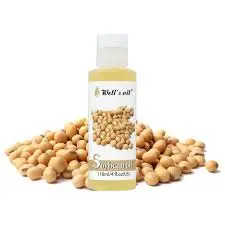
13. Soybean Oil
Pressed from soybeans, soybean oil is a versatile, affordable oil high in omega-6s and vitamin E. Its neutral flavor works across cuisines, but moderation is key to balance its omega-6 content. This oil is a workhorse for large-scale cooking needs, delivering reliable performance.
Soybean oil’s neutral profile makes it perfect for recipes where other flavors shine, from crispy fried foods to tender cakes. Its high smoke point and cost-effectiveness make it a staple for cooks who need a dependable oil for frequent use in a variety of dishes.
Best Uses
- Frying chicken nuggets or fries.
- Baking neutral cakes or pies.
- Sautéing hearty greens.
- Making fried appetizers.
Why It Stands Out
- Budget-friendly for bulk cooking.
- High smoke point for versatility.
- Vitamin E adds antioxidants.
- Neutral taste suits all dishes.
Ideal For
- Large-scale fryers.
- Budget bakers.
- Neutral flavor seekers.
- Everyday meal prep.
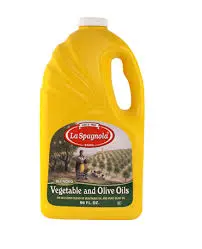
14. Vegetable Oil Blends
Blended from oils like canola, sunflower, or safflower, vegetable oil blends offer a neutral flavor making them ideal for general cooking. Affordable and versatile, they blend seamlessly into recipes, providing balanced fats for daily use without dominating other ingredients.
These blends are perfect for cooks who need a cost-effective, all-purpose oil for everything from frying to baking. Their neutral taste and reliable performance make them a pantry staple for families and home chefs seeking simplicity and consistency in their everyday meals.
Best Uses
- Frying hushpuppies or doughnuts.
- Baking brownies or cookies.
- Sautéing onions for soups.
- Making everyday stir-fries.
Why It Stands Out
- Cost-effective and widely available.
- Neutral flavor suits all cuisines.
- Balanced for daily cooking.
- Reliable for versatile tasks.
Ideal For
- All-purpose cooks.
- Budget households.
- Neutral oil fans.
- Everyday meal makers.
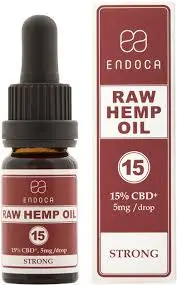
15. Hemp Oil
Extracted from hemp seeds, hemp oil is packed with omega-3s (ALA) and gamma-linolenic acid, supporting heart and skin health with a nutty flavor. It is best for raw or low-heat uses, preserving its delicate nutrients. This oil adds a wholesome touch to health-focused dishes, enhancing their flavor and nutrition.
Hemp oil’s nutty profile is perfect for drizzling over salads or blending into smoothies, offering a nutrient boost without high heat. Its omega-3 content and organic sourcing make it a favorite for cooks prioritizing anti-inflammatory benefits and sustainability in their recipes.
Best Uses
- Drizzling over quinoa salads.
- Blending into green smoothies.
- Tossing with roasted vegetables.
- Enhancing cold dips.
Why It Stands Out
- Omega-3s reduce inflammation.
- Nutty flavor enhances cold dishes.
- Organic options ensure purity.
- Supports heart, skin health.
Ideal For
- Raw food enthusiasts.
- Omega-3 dieters.
- Nutty flavor lovers.
- Health-focused cooks.
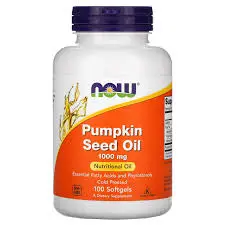
16. Pumpkin Seed Oil
Pressed from roasted pumpkin seeds, pumpkin seed oil offers omega-3s (ALA) and antioxidants, with a rich, nutty flavor that elevates dishes. It’s perfect for gourmet finishes that add bold taste to simple recipes.
This oil’s deep flavor transforms soups, salads, and roasted vegetables, offering a seasonal touch that’s ideal for fall-inspired meals. Its antioxidant content and distinctive taste make it a top choice for cooks seeking a health-conscious oil with a luxurious, nutty profile.
Best Uses
- Drizzling over pumpkin soup.
- Tossing with arugula salads.
- Finishing roasted squash.
- Enhancing grain bowls.
Why It Stands Out
- Antioxidants support wellness.
- Bold flavor elevates dishes.
- Ideal for cold, gourmet uses.
- Adds nutty depth.
Ideal For
- Gourmet drizzle fans.
- Fall cuisine lovers.
- Antioxidant seekers.
- Flavor-focused chefs.
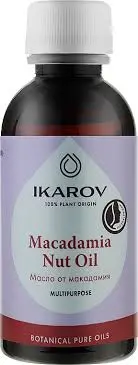
17. Macadamia Nut Oil
Extracted from macadamia nuts, macadamia nut oil is high in MUFAs and antioxidants. It supports heart health and adds richness to dishes, ideal for roasting or baking, though its higher cost suits special recipes. Its luxurious taste elevates gourmet creations.
This oil’s creamy profile enhances both savory and sweet dishes, from roasted vegetables to delicate desserts. Its heart-healthy fats and medium-heat stability make it a premium choice for cooks who want to infuse their meals with sophistication and nutrition.
Best Uses
- Roasting sweet carrots.
- Baking macadamia-crusted fish.
- Drizzling over grilled pineapple.
- Enhancing gourmet salads.
Why It Stands Out
- MUFAs boost heart health.
- Buttery taste enhances gourmet dishes.
- Stable for medium heat.
- Luxurious for special meals.
Ideal For
- Gourmet cooks.
- Heart-health dieters.
- Buttery flavor fans.
- Special occasion chefs.
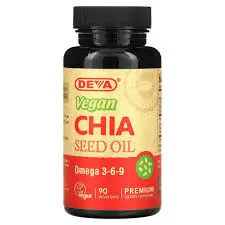
18. Chia Seed Oil
Pressed from chia seeds, chia seed oil is omega-3-rich (ALA), supporting heart and brain health with a mild flavor and for light cooking. It lacks the fiber of whole seeds but adds nutrition to subtle dishes, making it a health-conscious choice for versatile recipes.
Chia seed oil’s gentle taste is perfect for light sautéing or drizzling, enhancing grain bowls and smoothies without overpowering. Its omega-3 content and organic sourcing make it ideal for cooks seeking anti-inflammatory benefits and a nutrient boost in their health-focused meals.
Best Uses
- Lightly sautéing spinach or kale.
- Blending into chia smoothies.
- Drizzling over grain bowls.
- Enhancing light dressings.
Why It Stands Out
- Omega-3s aid inflammation.
- Mild flavor fits subtle dishes.
- Organic sourcing ensures quality.
- Supports heart, brain health.
Ideal For
- Omega-3 enthusiasts.
- Light cooking fans.
- Smoothie makers.
- Health-focused cooks.

19. Almond Oil
Extracted from almonds, almond oil is high in MUFAs and vitamin E, offering a nutty flavor. It supports heart health and suits high-heat cooking or raw uses, with refined versions for frying and unrefined for dressings, providing versatility for a range of dishes.
This oil’s nutty profile enhances baked goods, fried foods, and salads, adding a subtle richness that elevates both sweet and savory recipes. Its heart-healthy fats and high smoke point make it a reliable choice for cooks who value nutrition and flavor in their culinary creations.
Best Uses
- Baking almond-crusted pastries.
- Frying crispy fish fillets.
- Tossing with kale salads.
- Enhancing nutty desserts.
Why It Stands Out
- MUFAs, vitamin E boost heart health.
- Nutty flavor enhances baked goods.
- Stable for high-heat versatility.
- Great for raw, cooked dishes.
Ideal For
- Nutty dessert bakers.
- High-heat cooks.
- Salad dressing creators.
- Heart-health fans.
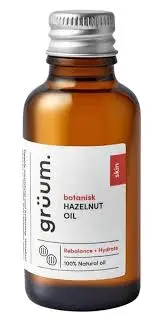
20. Hazelnut Oil
Pressed from hazelnuts, hazelnut oil is high in MUFAs, with a bold, nutty flavor, best for low-heat or raw uses to preserve its richness. It elevates gourmet dishes, adding sophistication to salads, risottos, or baked goods for special occasions with a luxurious touch.
Hazelnut oil’s intense flavor transforms simple ingredients into elegant creations, from roasted vegetable salads to delicate pastries. Its heart-healthy fats and gourmet appeal make it a top choice for cooks who want to impress with nutrient-rich, flavorful dishes.
Best Uses
- Drizzling over hazelnut salads.
- Baking biscotti or cakes.
- Tossing with mushroom risotto.
- Enhancing gourmet desserts.
Why It Stands Out
- MUFAs support heart health.
- Rich flavor elevates gourmet recipes.
- Best for low-heat, raw uses.
- Luxurious for special dishes.
Ideal For
- Gourmet dessert makers.
- Nutty flavor enthusiasts.
- Special occasion cooks.
- Salad enhancers.
Conclusion
The right cooking oil can elevate your dishes, combining health benefits with culinary excellence. From the heart-protective power of extra virgin olive oil to the high-heat versatility of avocado oil, these 20 oils offer something for every cook and cuisine. Whether you’re frying, roasting, or drizzling, this list equips you with picks to make every meal a nutritious masterpiece. Keep these oils in your pantry to ensure your dishes shine with flavor and wellness.
FAQs
What Makes a Good Cooking Oil for Health?
A healthy cooking oil offers beneficial fats (MUFAs, omega-3s), antioxidants, and stability for your cooking method. Oils like EVOO and avocado oil provide heart-healthy fats and versatility, with cold-pressed options maximizing nutrients for optimal wellness.
Can I Use Budget Cooking Oils?
Yes, oils like canola and vegetable blends are affordable and healthy when minimally processed. Opt for non-GMO or cold-pressed versions to ensure quality and nutrition, making them practical for everyday cooking.
How Do I Store Cooking Oils?
Store oils in cool, dark places in airtight containers to prevent oxidation. Nut-rich oils like walnut or hemp should be refrigerated after opening, and most oils are best used within 6–12 months for freshness.
How Do I Choose the Right Cooking Oil?
Match the oil’s fat profile and smoke point to your dish. Prioritize MUFAs and omega-3s for health, choose cold-pressed for raw uses, and select high smoke point oils for frying to ensure both flavor and nutrition.
Are Cooking Oils Safe for All Cookware?
Most oils are safe for nonstick, stainless steel, and cast iron cookware. High smoke point oils (e.g., ghee, avocado) prevent sticking and burning, preserving cookware surfaces during high-heat cooking tasks.

Leave a Reply